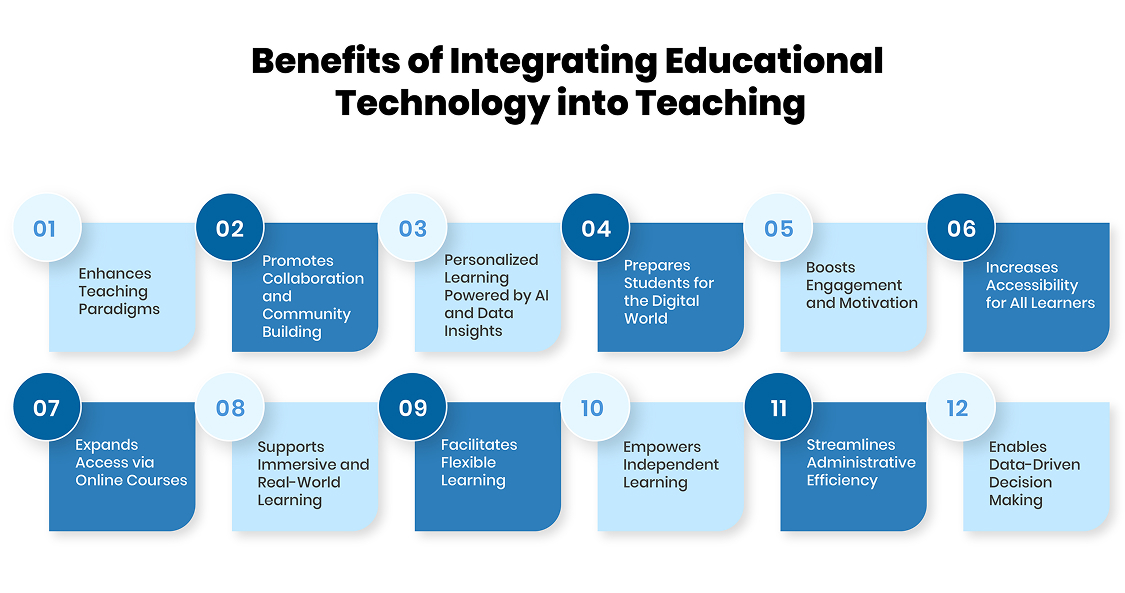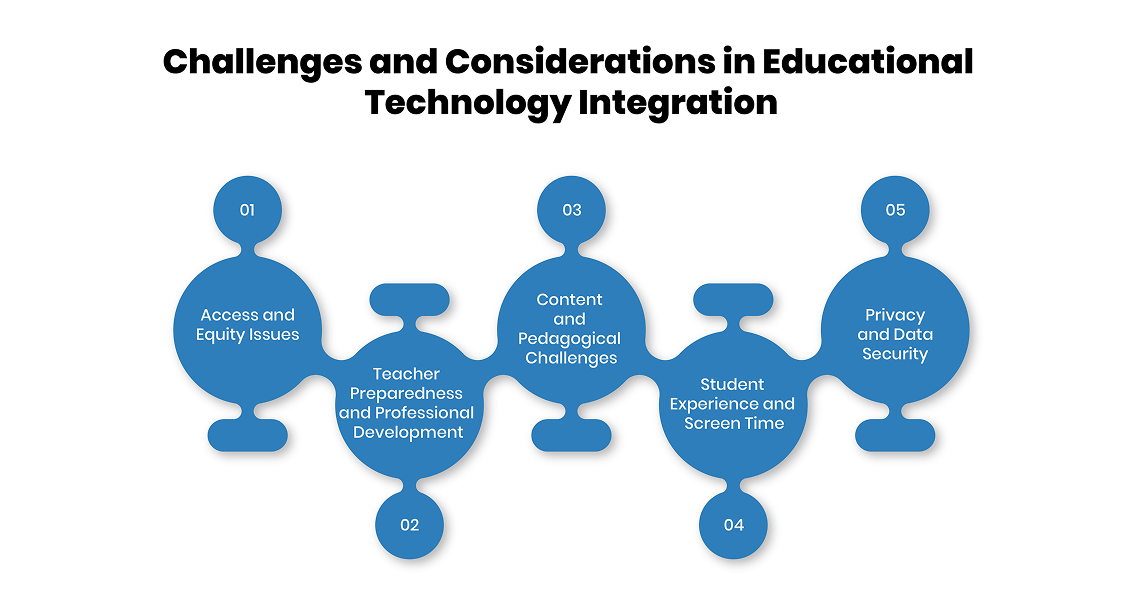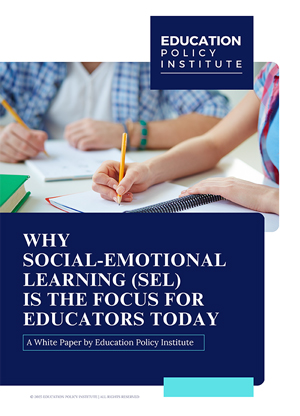As education continues to evolve, digital innovation is playing a central role in redefining teaching and learning practices. The integration of tools like AI, online platforms, and smart devices is expanding the boundaries of traditional classrooms, creating more dynamic and flexible learning experiences. These innovations have made learning more adaptive, engaging, and accessible, enabling students to develop critical 21st-century skills needed for a competitive, tech-driven world. Beyond just facilitating remote or crisis-based instruction, the thoughtful integration of technology allows for standardized learning experiences, increased collaboration, and improved tracking of student progress—benefits that are essential for preparing students for careers shaped by ongoing global digitalization.
As more schools, especially in rapidly developing areas, recognize the value of digital tools in education, it becomes evident that technology must be woven meaningfully into the curriculum rather than added as an afterthought. While adopting advanced tools can pose challenges, the long-term benefits—ranging from personalized instruction and enhanced student motivation to inclusive learning and data-informed teaching strategies—highlight the vital role technology plays in modern education. The future of learning lies not in technology itself but in how effectively it is used to empower both educators and students in a dynamic, interconnected world.
Benefits of Integrating Educational Technology into Teaching
EdTech empowers educators to adopt dynamic pedagogies and equips learners with the digital competencies essential for success in today’s world. By reshaping how knowledge is delivered and accessed, educational technology supports more flexible and effective learning environments.

01. Enhances Teaching Paradigms
Educational technology enables the implementation of modern instructional strategies such as project-based, inquiry-based, and collaborative learning. It also supports distance learning and Universal Design for Learning (UDL), making instruction more inclusive, flexible, and responsive to diverse student needs.
02. Promotes Collaboration and Community Building
Digital tools facilitate real-time group work, shared projects, and peer interactions. Platforms like Zoom and learning management systems (LMS) develop teamwork among remote and local students. Virtual exchange programs and communication tools also enhance teacher-student-parent engagement and promote global citizenship skills.
03. Personalized Learning Powered by AI and Data Insights
AI-driven platforms dynamically adjust content based on each student’s learning pace, style, and progress, offering individualized pathways that support deeper understanding. These systems act like virtual coaches, providing timely feedback and encouraging self-monitoring and independent learning. Simultaneously, EdTech platforms gather and analyze performance data to help educators pinpoint students’ strengths, challenges, and engagement levels. This empowers teachers to offer personalized instruction, plan data-informed lessons, and deliver targeted interventions, ultimately improving academic outcomes. Together, AI and analytics ensure that every learner receives the right support at the right time, making education more responsive and effective.
04. Prepares Students for the Digital World
Students gain early exposure to digital tools commonly used in higher education and the workplace, such as productivity software, simulations, analytics platforms, and collaboration apps. This tech familiarity nurtures digital literacy and professional readiness.
05. Boosts Engagement and Motivation
Game-based learning, simulations, and multimedia resources enhance engagement by making learning interactive and enjoyable. Many prominent tools and applications gamify content, increasing student motivation, participation, and knowledge retention.
06. Increases Accessibility for All Learners
Assistive technologies—like speech-to-text, screen readers, and adaptive hardware—support students with disabilities. EdTech promotes inclusive learning by accommodating diverse learning needs and enabling personalized support.
07. Expands Access via Online Courses
Online learning breaks geographic barriers, offering flexible and affordable education. Learners can study at their convenience, making education accessible to working professionals, adult learners, and those with limited mobility or resources.
08. Supports Immersive and Real-World Learning
IoT-enabled tools and simulations allow hands-on experiences in subjects like science, sustainability, and engineering. Students can work on STEM projects using various high-end devices, enhancing creativity and problem-solving.
09. Facilitates Flexible Learning
Technology allows students to learn at their own pace, anytime and anywhere. It supports customized learning environments and global collaboration, adapting to individual schedules and preferences.
10. Empowers Independent Learning
With instant online access to vast information and resources, students can explore topics deeply, supporting inquiry, critical thinking, and self-directed learning.
11. Streamlines Administrative Efficiency
EdTech automates routine tasks like attendance, grading, and communication. This reduces teachers’ workload, improves accuracy, and ensures better coordination with parents and students.
12. Enables Data-Driven Decision Making
Educators can harness analytics to refine teaching methods, identify learning gaps, and optimize instructional effectiveness. This ensures decisions are grounded in evidence, not guesswork.
Challenges and Considerations in Educational Technology Integration
While educational technology offers vast benefits—including enhanced collaboration, improved academic outcomes, and more engaging learning experiences—it also presents several significant challenges that must be addressed for successful implementation.

1. Access and Equity Issues
A major barrier remains the digital divide, where not all students have equal access to devices or reliable internet connectivity. This inequity can severely hinder student participation and learning, particularly in under-resourced districts. Even as educational tools become more widespread, only a small percentage of schools (less than 10%, according to Project Tomorrow) report having advanced technologies like AI and AR in classrooms.
2. Teacher Preparedness and Professional Development
The effectiveness of educational technology relies heavily on how well teachers are trained to use it. Many educators report feeling overwhelmed by the shift to digital tools, especially in regions where online learning has not been standard. Continuous professional development is essential to equip teachers with the skills to integrate technology meaningfully and effectively into their instruction.
3. Content and Pedagogical Challenges
Another critical concern is the development of quality online educational content. During emergencies, there was little time to ensure that digital content encouraged critical thinking or presented diverse perspectives. Teachers need time and support to adapt curricula for digital platforms without compromising educational integrity.
4. Student Experience and Screen Time
While many students thrive with online education when provided with the right resources, others face challenges due to lack of support at home or previous academic struggles. Over-reliance on screens also raises concerns about physical and mental health, particularly for younger learners. Excessive screen time, combined with reduced in-person interaction, can negatively impact student engagement and well-being.
5. Privacy and Data Security
With the growing use of digital platforms, concerns around data privacy have intensified. Ensuring the protection of student information is crucial and requires strict adherence to data protection regulations.
Looking Into the Future of Tech-driven Learning
The future of technology-driven learning is poised to transform education, particularly in forward-thinking. Artificial Intelligence is leading this transformation by enabling personalized learning experiences. AI-powered platforms can adapt to individual student needs, providing customized content and real-time feedback, thereby enhancing engagement and comprehension. Gamification, through the integration of game-like elements such as points and leaderboards, is making learning more interactive and enjoyable, nurturing creativity and critical thinking among students. Additionally, cloud-based platforms are facilitating seamless collaboration, allowing students from diverse locations to work together on projects, thus promoting global learning communities.
Emerging technologies like Augmented Reality (AR) and Virtual Reality (VR) are further enriching the educational landscape. These tools offer immersive learning experiences, such as virtual field trips and interactive simulations, making complex concepts more accessible and engaging. Microlearning, characterized by short, focused learning modules, is gaining popularity for its ability to deliver content in manageable segments, catering to the modern learner's preference for concise information. Furthermore, AI is streamlining administrative tasks for educators, freeing up time to focus on instruction and student support. As these technologies continue to evolve, they hold the promise of creating more inclusive, efficient, and engaging learning environments, preparing students to thrive in a rapidly changing digital world.
Conclusion
The integration of technology in education is not just a trend but a transformative force that is reshaping how students learn, and teachers instruct. From enabling personalized, data-driven instruction to building collaboration, creativity, and real-world skills, technology has the potential to address long-standing educational challenges and open new possibilities. However, to fully harness these benefits, schools must invest in equitable access, ongoing teacher training, and the development of high-quality digital content. As we look ahead, it’s clear that technology—when thoughtfully and inclusively implemented—will play a crucial role in preparing students for a dynamic, tech-centric future.
Latest
Trends blogs
- Certification and Credentials: The New Fuel for Career Growth
- Technology in Outcome-Based Education: Driving Change in Higher Education
- Navigating AI in Higher Education: Possibilities and Concerns
- Shaping Tomorrow’s Educators: AI in Education and Institutional Growth





